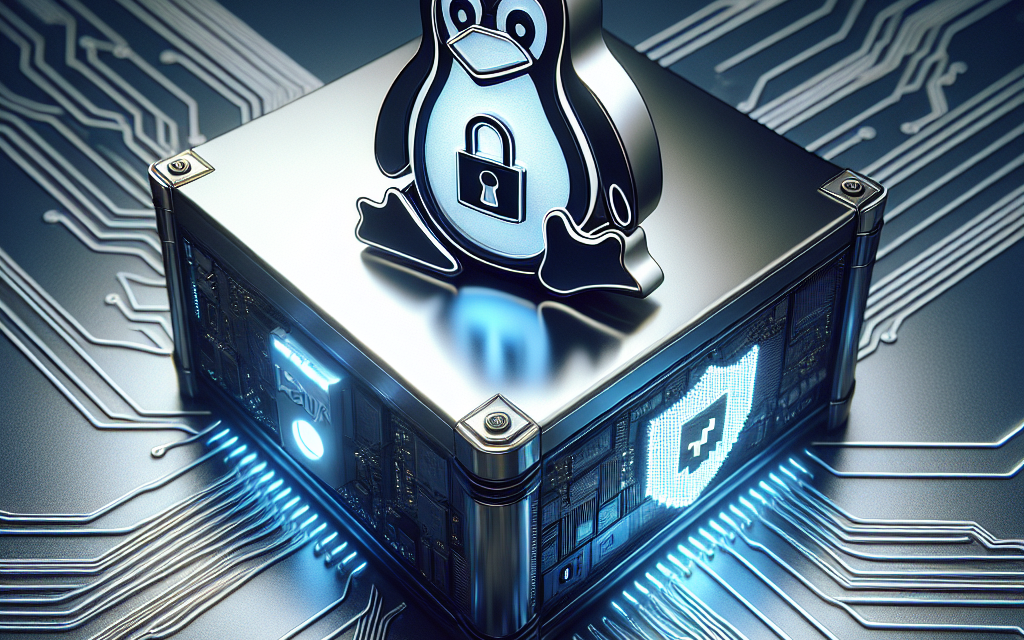In today’s digital landscape, where security breaches are a constant threat, it’s becoming increasingly important to fortify systems against potential attacks. One effective approach to enhance the security of Linux systems is by configuring an immutable root filesystem. This article will delve into what an immutable filesystem is, why it’s important, and how to configure one on your Linux system.
What is an Immutable Root Filesystem?
An immutable root filesystem means that the core system files are set in a way that they cannot be modified, either by users or processes—including malicious ones. This adds a layer of protection against unauthorized changes, accidental deletions, and malware infections, making it harder for attackers to manipulate system files if they manage to gain access to the system.
Benefits of Using an Immutable Root Filesystem
-
Enhanced Security: Prevents unauthorized modifications to critical system files, which are often the target of malware and attacks.
-
System Integrity: Maintains the integrity of the operating system, reducing the risk of system corruption.
-
Ease of Recovery: In the event of an attack, rolling back to a known good state becomes straightforward and often requires minimal downtime.
- Predictability: Regular updates and modifications can be performed in a controlled manner, improving overall system reliability.
Planning Your Immutable Filesystem
Before configuring an immutable root filesystem, it’s important to assess the specific needs of your environment. Here are a few considerations:
- System Requirements: Ensure that your applications and services can run in an immutable environment.
- Backup Strategy: Have a solid backup plan in place, as the immutable filesystem can complicate regular file changes.
- Testing: Conduct thorough testing in a non-production environment to validate functionality and performance.
Step-by-Step Configuration
Step 1: Install Required Packages
You will need specific tools and utilities to create and manage an immutable filesystem. Start with updating your package repository and installing required packages:
sudo apt update
sudo apt install overlayrootStep 2: Configure OverlayFS
In this method, we will use OverlayFS to create an immutable-like environment that allows for temporary changes.
- Edit the
/etc/overlayroot.confFile:
Open the config file for editing:
sudo nano /etc/overlayroot.confAdd the following lines, depending on your distribution specifics:
overlayroot=tmpfs:/tmp/overlayroot- Set Up fstab:
Update your fstab file to mount the overlay filesystem:
sudo nano /etc/fstabAdd the following line:
tmpfs /mnt/overlayroot tmpfs defaults,size=100M 0 0Step 3: Make the Root Filesystem Immutable
- Remount Root Filesystem as Read-Only:
To prevent any changes to your root filesystem, remount it as read-only. This can usually be done with the following command:
sudo mount -o remount,ro /- Configure on Boot:
To ensure the root filesystem is mounted as read-only at every boot, you can modify the GRUB configuration:
sudo nano /etc/default/grubFind the line starting with GRUB_CMDLINE_LINUX_DEFAULT and add ro to the string. Example:
GRUB_CMDLINE_LINUX_DEFAULT="quiet splash ro"After modifications, update GRUB:
sudo update-grubStep 4: Validate the Configuration
After making these changes, it’s crucial to reboot your system and verify the configuration:
- Reboot your system:
sudo reboot- Once rebooted, check the filesystem:
mount | grep ' / 'You should see that the root filesystem is mounted as read-only, confirming that the configuration was successful.
Additional Considerations
-
Temporary Changes: If you need to make changes to configurations, ensure that your overlay filesystem is used for those temporary purposes. Remember to plan these updates carefully and consider whether to make them permanent.
-
Regular Backups: Even with an immutable system, regular backups remain critical. Use tools like
rsyncortarto automate your backup process. - Test Security Measures: Continuously test and validate the efficacy of your security measures, as attackers evolve rapidly and can still find new ways to exploit weaknesses.
Conclusion
Configuring an immutable root filesystem is an effective strategy to bolster security in your Linux environment. While it may come with some limitations regarding system modifications, the benefits of increased protection outweigh the inconveniences. By following the steps outlined above, you can build a more resilient Linux system capable of defending against various threats. Always remember, security is a continuous process that requires vigilance, regular updates, and testing.
For more insights on system security and optimization, stay tuned to the WafaTech Blog.





